


Although I describe this as an open road technique the principal can be applied to almost any driving situation at any speed, however, in the video above and the text below we are focussing on using the method for bends and corners.
Many drivers come to grief because they attempt to drive too quickly through bends, corners, and other places where visibility is restricted without proper forward planning…
Depending on your previous experience of driving you might have heard the terms 'vanishing point' - the point at which your view of the road ahead vanishes - or 'the arrowhead principle' meaning that it's the point at which both sides of the road appear to come together as if making an arrowhead. These are alternative (older) names given to the limit point principle.
You can use the 'limit point' to determine your speed on the approach to hazards, specifically bends in this article. The term 'limit point' describes the furthest point that you can see ahead with an unbroken view of the road surface (the limit of your vision).
The photograph below shows the limit point circled on white for this right-hand bend in the distance.
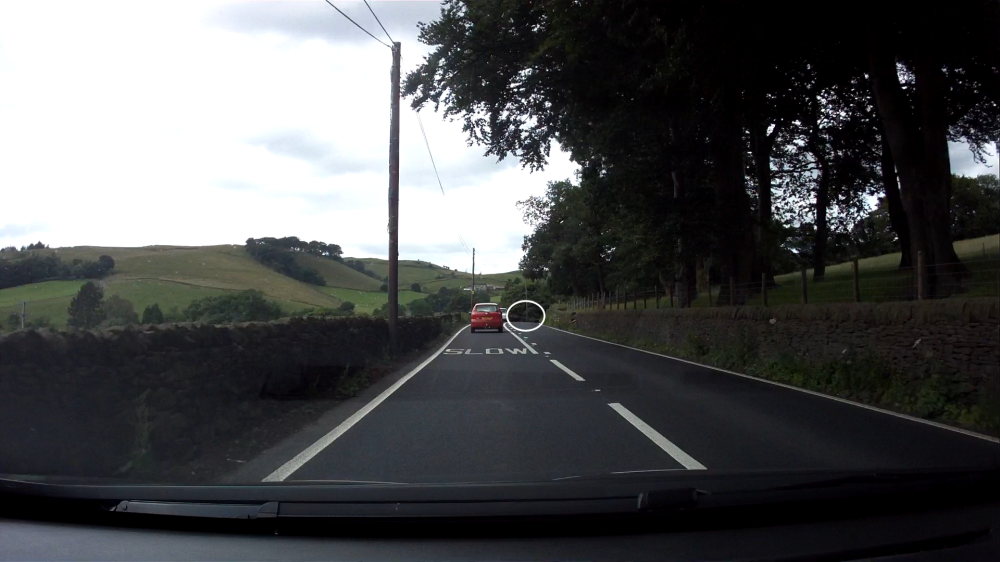
Slow down
As you approach the bend the limit point will at first appear to be be static.
That is, although you are travelling towards the limit point (the bend in this case) your view is fixed you cannot yet see beyond the limit point. As the gap between your car and the limit point closes, you will need to 'close down' your speed (slow down).
The next photo below demonstrates this - it was quite a lot nearer to the bend than the one above, but we still cannot see any further ahead. The furthest telegraph pole is the same one as in the previous picture.
You must adjust your speed so that the limit point (the furthest point that you can see) is never further away than one-and-a-half times your stopping distance (this allows space for approaching 'idiots' - see 'stopping distance' below).
This will usually mean that you will continue to slow down until the view starts to open up - or, in other words the limit point starts to move further away.
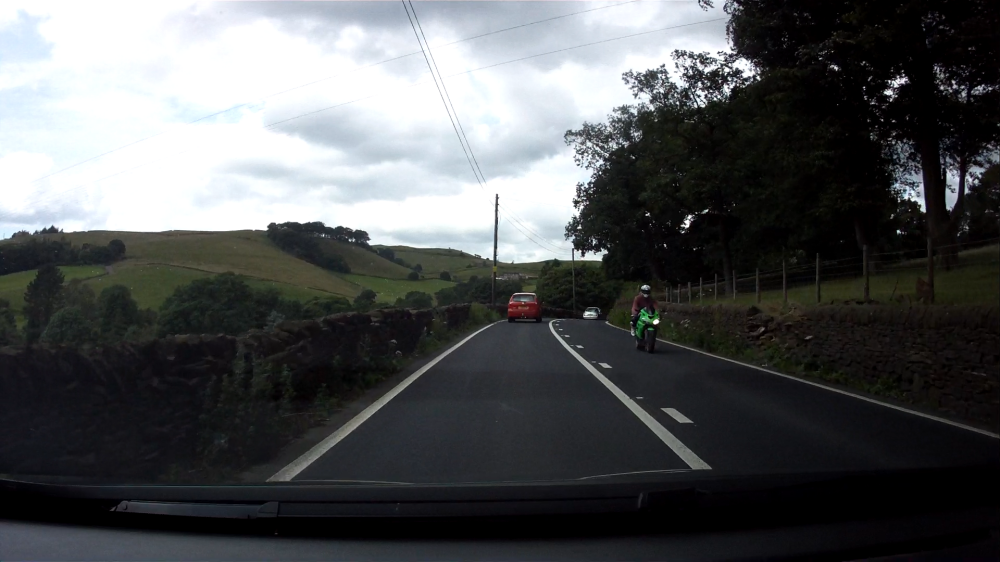
Your view of the limit point will dictate your speed through the bend.
It is often said that you must always be able to stop safely within the distance that you can see to be clear ahead. In other words, your speed must never be so fast that you cant stop within the limit of your vision.
The problem with this, especially on bends, is that if someone is coming towards you (not yet in sight), and is on your side of the road (or if the road is narrow), they will need some stopping distance too! My advice is that where your view is limited you should adjust your speed so that you could stop safely with a good safety margin that is greater than your overall stopping distance.
As you get closer to the bend, the limit point will appear to move away from you at a constant rate - you can now keep your speed constant.
The photo below is taken as we approach the furthest telegraph pole that was visible in the previous photos. We can now see further into the bend. The view ahead is approximately 150 metres.
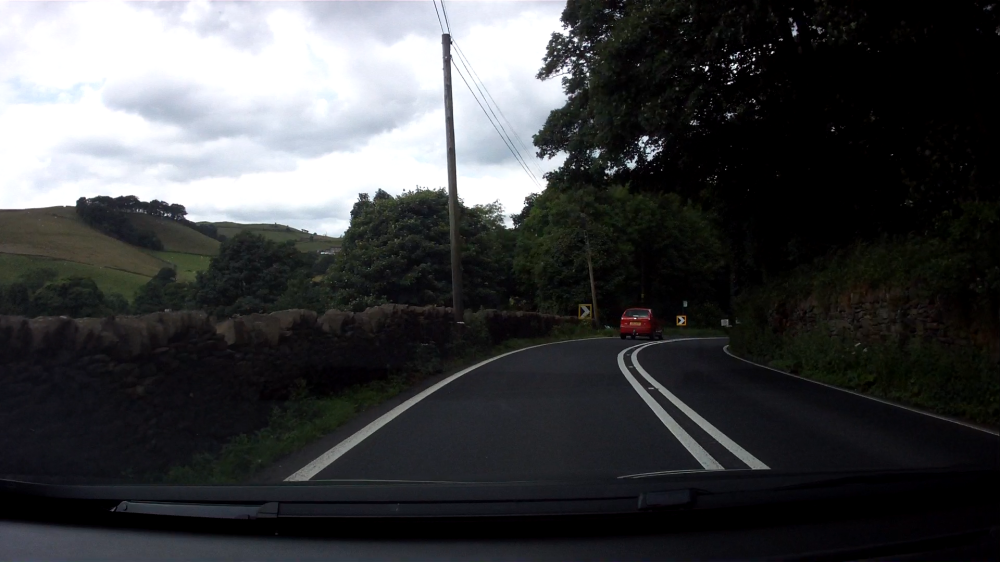
At this point you will have set your speed for the bend in line with the stopping distance guideline outlined above. The speed now remains constant as we drive around the bend under gentle acceleration with the appropriate gear engaged.
In the next photo we have reached the first sharp-deviation board, but the limit of our vision is still about the same - about 100 metres.
During this phase of the bend your speed remains constant - because the view ahead is constant. The length of time that you keep the constant speed will depend on the length and severity of the bend.
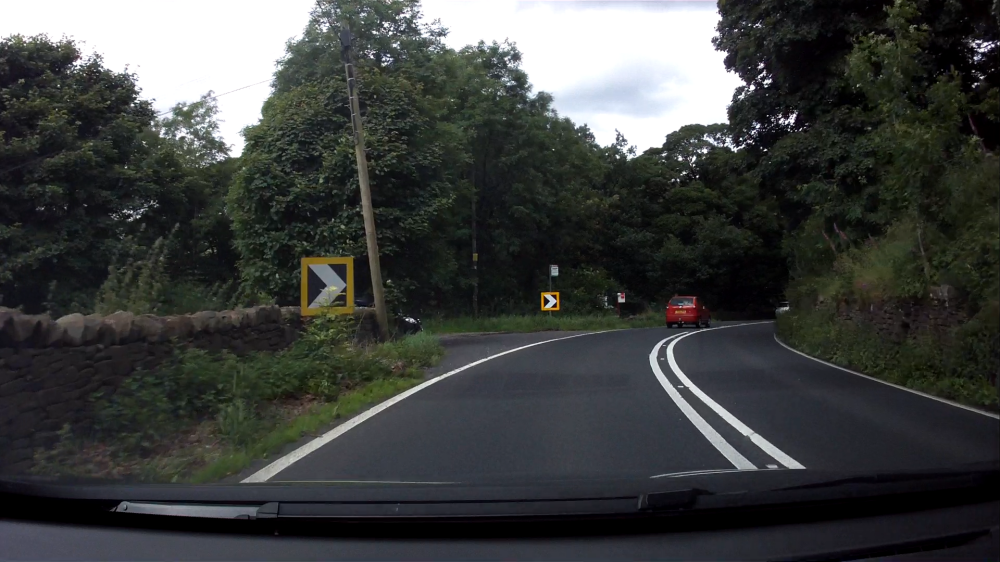
As the bend opens up, the limit point appears to accelerate away from you... As the vie opens, you can 'open' your speed (speed up).
In this picture the road opens up to give a view of something approaching 300 metres - to the next limit point for a bend to the left. If the road were straightening out the view can extend to 800/1200/1500 metres in less than a second.
At this point you can increase your power and speed accordingly until you start over again for the next limit point! If the road were to straighten out you might 'hit' the speed limit. In this example there will only be a very modest speed increase.
You can see the 'new' limit point just beyond the silver car ahead.
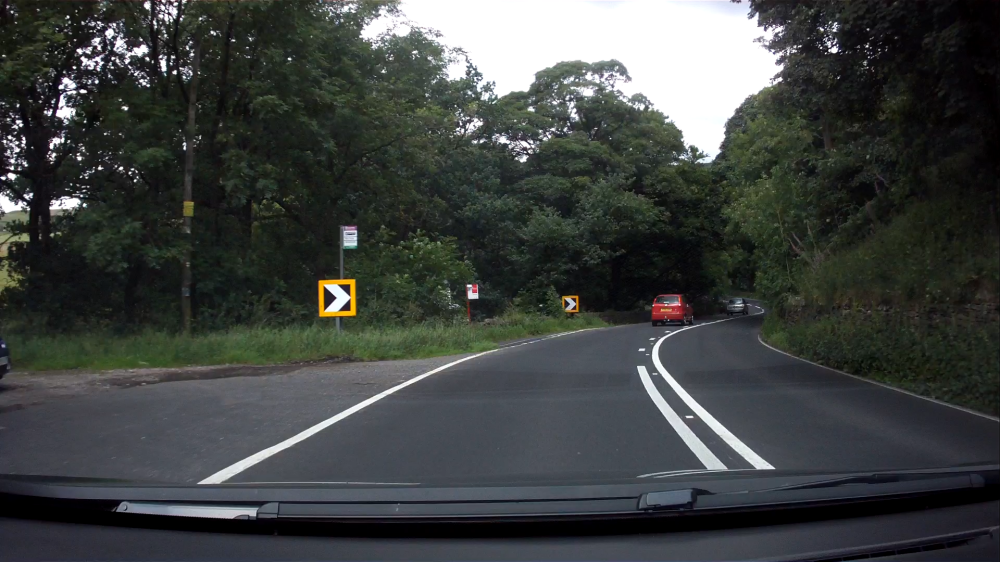
The police driving manual 'Roadcraft' suggests changing road position to gain a better view ahead.
Moving to the left will improve your vision on a right-hand bend but you need to keep away from debris and potholes on the side of the road; moving to the right will improve vision on a left-hand bend, but here you need to be aware of dangers from approaching traffic. Make sure you have enough safety margin to deal with approaching drivers.
Important note:
The DVSA manual 'Driving, the essential skills' does not advise what might be considered as 'extreme' position changes. It advises drivers to keep to the centre of their lane when approaching left-bends and to 'keep to the left' when approaching right bends (to improve view), however, it does not specifically advise drivers to 'move to the left'. The DVSA advice is designed for all drivers regardless of their skill level whereas Roadcraft is aimed at experienced, trained drivers. For DVSA tests keep to the DVSA methods - in other words, stay in the centre of your lane.
By following the DVSA method you will need to take bends a little slower, simply because you will not be able to see as far ahead and cannot extend the radius of the bend.
The apex is the 'mid point' of your turn, the point at which you are closest to the inside of the curve. For safe road driving you should aim to place your apex beyond the middle of the bend - the poorer the view through the bend, the later the apex.
Avoid confusing this with the line taken by racing drivers - on the track drivers will often take an early apex to maximise acceleration of the curve using all the track. You can't use all of a public road unless you are 100% sure that it is clear and it is safe to do so without infringement of any legal restrictions, but bear in mind that you must have a clear unbroken view through the bends to do this safely. Even then some would consider going on to the 'wrong side' as dangerous driving.
If you are tackling a series of bends, visualise the straightest, smoothest line through the bends - allowing for approaching traffic. The aim is to maintain maximum balance.
I have taught this method to experienced drivers and learners alike. The benefits are that where ever you position on the road (DVSA or Roadcraft) you will maintain the best view for your speed. With practise you will learn to time your gear changes and select an appropriate gear for maximum stability through bends. The method encourages long observation - often you will be looking through the drivers door window to monitor the limit point on some right-hand bends*.
While I don't suggest this method as a way to increase your speed through bends - your speed MUST always be safe and legal, many of the instructors and student instructors I have taught were surprised at how much quicker that could safely take bends with a well balanced car.
The benefit is that this would give the confidence not to stab the brake pedal mid bend if they make a slight misjudgement. Sadly many drivers have been killed or seriously injured when braking an unbalancing their cars on bends, even at relatively low speeds - had they understood limit-point theory they might have been shaken but unscathed...
*In my experience the most common cause of unbalanced vehicles on bends is not speed, but where the driver is looking. It's important to look well ahead and keep your eyes moving, Speed does play an important role, however. If you enter a bend too fast you are more likely to suffer from 'fixed' observation and stare at the apex, the deviation boards or the tree on the corner... This could prove to be fatal. Start with slow practise and learn to 'lift your eyes' to put your main focus on the route out of the bend. (See the notes on the next page.)
Next: Understanding your car when cornering